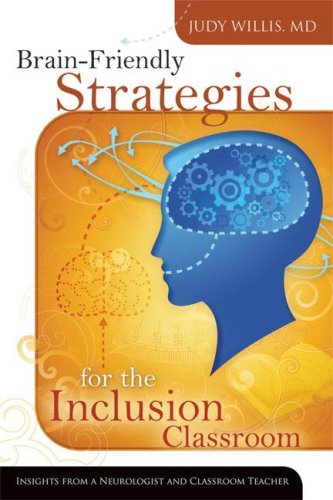Brain Matters: Translating Research into Classroom Practice
By Patricia Wolfe
Publisher: Association for Supervision & Curriculum Deve
Number Of Pages: 207
Publication Date: 2001-07
ISBN-10 / ASIN: 0871205173
ISBN-13 / EAN: 9780871205179
Binding: Paperback
Book Description:
Everyone agrees that what we do in schools should be based on what we know about how our brain learns. Until recently, however, we have had few clues to unlock the secrets of the brain. Now, research from the neurosciences has greatly improved our understanding of the learning process, and we have a much more solid foundation on which to base educational decisions.
In this book, Patricia Wolfe makes it clear that before we can effectively match teaching practice to brain functioning, we must first understand how the brain functions. In Part I, several chapters act as a mini-textbook on brain anatomy and physiology. Then, in Part II, Wolfe brings brain functioning into clearer focus, describing how the brain encodes, manipulates, and stores information. This information-processing model provides a first look at some implications of the research for practice--why meaning is essential for attention, how emotion can enhance or impede learning, and how different types of rehearsal are necessary for different types of learning.
In Part III, Wolfe devotes several chapters to practical classroom applications and brain-compatible teaching strategies. This section shows how to use simulations, projects, problem-based learning, graphic organizers, music, rhyme and rhythm, writing, active engagement, and mnemonics. Each chapter provides examples using brief scenarios from actual classroom practice, from the lower elementary grades to high school. The book also includes a glossary of terms.

Format: PDF
Size: 1.8 MB
By Patricia Wolfe
Publisher: Association for Supervision & Curriculum Deve
Number Of Pages: 207
Publication Date: 2001-07
ISBN-10 / ASIN: 0871205173
ISBN-13 / EAN: 9780871205179
Binding: Paperback
Book Description:
Everyone agrees that what we do in schools should be based on what we know about how our brain learns. Until recently, however, we have had few clues to unlock the secrets of the brain. Now, research from the neurosciences has greatly improved our understanding of the learning process, and we have a much more solid foundation on which to base educational decisions.
In this book, Patricia Wolfe makes it clear that before we can effectively match teaching practice to brain functioning, we must first understand how the brain functions. In Part I, several chapters act as a mini-textbook on brain anatomy and physiology. Then, in Part II, Wolfe brings brain functioning into clearer focus, describing how the brain encodes, manipulates, and stores information. This information-processing model provides a first look at some implications of the research for practice--why meaning is essential for attention, how emotion can enhance or impede learning, and how different types of rehearsal are necessary for different types of learning.
In Part III, Wolfe devotes several chapters to practical classroom applications and brain-compatible teaching strategies. This section shows how to use simulations, projects, problem-based learning, graphic organizers, music, rhyme and rhythm, writing, active engagement, and mnemonics. Each chapter provides examples using brief scenarios from actual classroom practice, from the lower elementary grades to high school. The book also includes a glossary of terms.

Format: PDF
Size: 1.8 MB





